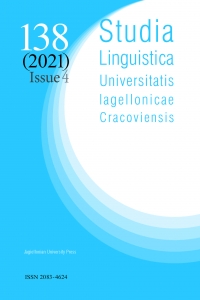Finnic tetrameter in J.R.R. Tolkien’s The Story of Kullervo in comparison to W.F. Kirby’s English translation of the Kalevala
Finnic tetrameter in J.R.R. Tolkien’s The Story of Kullervo in comparison to W.F. Kirby’s English translation of the Kalevala
Author(s): Iwona PiechnikSubject(s): Poetry, Comparative Study of Literature, Translation Studies, Theory of Literature, British Literature
Published by: Wydawnictwo Uniwersytetu Jagiellońskiego
Keywords: trochaic tetrameter; Finnic metrics; Kalevala-metre; Kullervo; Tolkien;
Summary/Abstract: The Finnish epic Kalevala is written in the so-called Finnic “Kalevala-metre”, typical of Finnic oral poetry. Its main features are the use of trochaic tetrameter (octosyllabic lines), alliteration, assonance, sound parallelisms and the repetition of words. It is difficult to retain those features in translation but one of the early successful attempts was the first full English translation directly from Finnish by William Forsell Kirby (1907). Kirby’s translation was a source of inspiration and the linguistic model for The Story of Kullervo, a tale written by John Ronald Reuel Tolkien (probably in 1912), based on one of the Kalevala’s stories. Our aim is to compare those texts.
Journal: Studia Linguistica Universitatis Iagellonicae Cracoviensis
- Issue Year: 138/2021
- Issue No: 4
- Page Range: 201-220
- Page Count: 20
- Language: English

